Some background info from Janes:
"Belgian-Dutch co-operation in air operations against the so-called Islamic State in Iraq and Syria is having a larger impact than the two countries' "modest air forces" could have on their own, the chief of the Belgian air forces said on 30 September.
Major General Frederik Vansina cited synergies in the use of maintenance equipment and the minimisation of the logistical footprint and deployment costs among the benefits of Belgium's partnership with the Netherlands in operating a European Participating Air Forces (EPAF) expeditionary air wing from Jordan. Belgium and the Netherlands take turns as the lead nation, providing F-16s for Operation 'Desert Falcon', with the supporting nation providing force protection.
Six Belgian Air Force F-16s and 96 personnel were deployed to Jordan for a year from 1 July, providing close air support (CAS), air interdiction, and air reconnaissance over Iraq and Syria. Maj Gen Vansina described a battle rhythm of two to four sorties averaging five hours each on six flying days a week, with the seventh day devoted to maintenance.
Between 1 July and 25 September the Belgian F-16s logged 1,115 hours during 220 sorties and 105 missions, mostly over Iraq.
Three-quarters of these missions were for CAS, 13% were air interdiction missions, and 12% were reconnaissance sorties. Some 44% of the missions were 'kinetic', involving the dropping of laser- or GPS-guided bombs. Maj Gen Vansina declined to reveal further details of the ordnance expended but said imagery of 355 "points of interest" was provided by the reconnaissance missions.
He said Belgian F-16s encountered more air defence activity in the form of anti-aircraft artillery and machine guns over Syria than over Iraq, but that they were flying too high to be affected. He claimed 100% mission effectiveness and adherence to the rules of engagement without any collateral damage.
The general added that there was no connection but rather co-ordination with Russian air operations through the Combined Air Operations Center (CAOC) at Al Udeid Air Base in Qatar."
It is indeed true that The Netherlands and Belgium take turns in providing jets to the anti-IS mission. From SEP 2014 to July 2015 our countries operated simultaneously, but then our detachment was sent home due to budgetary reasons. The Dutch continued until July of this year, when we took over again. This BAF mission will end in July 2017, after which the RNLAF takes over again.
Base protection however is always the responsibility of the country not deploying jets. So in 2015/2016 there was a Belgian platoon of infantry guarding the Dutch jets, whereas currently a Dutch platoon is deployed to protect the Belgian jets.
Some stills of the video, because all videos seem to disappear after a while:
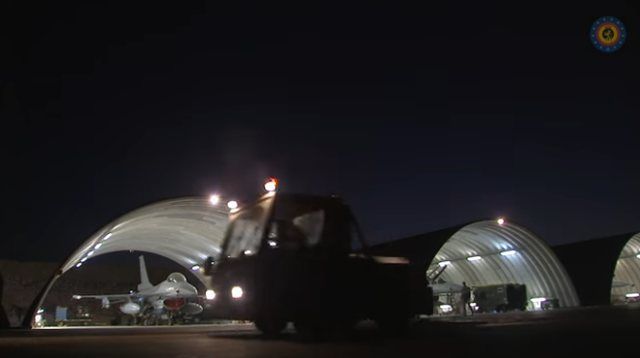
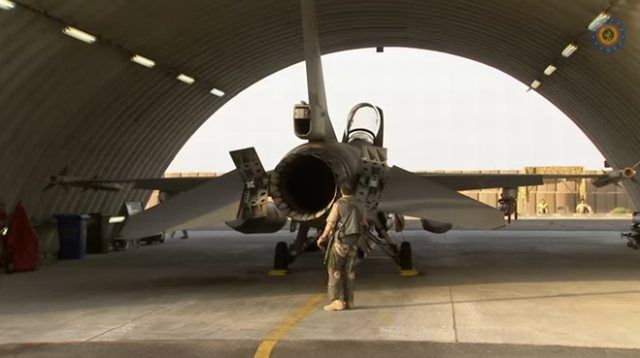
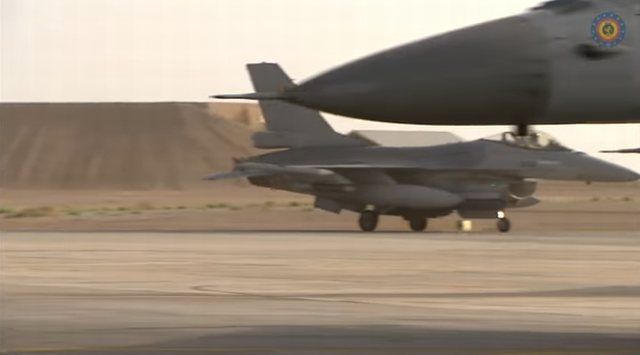
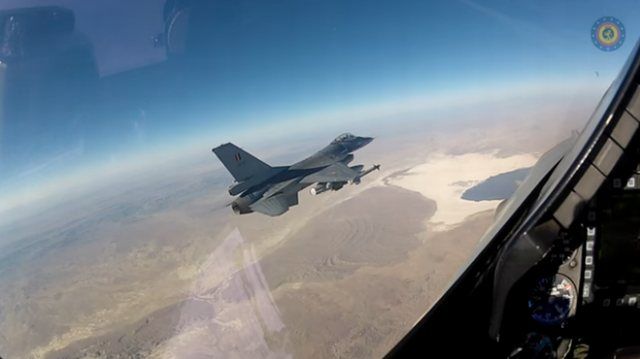
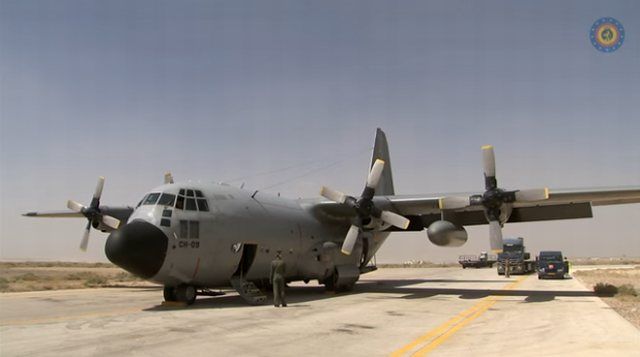
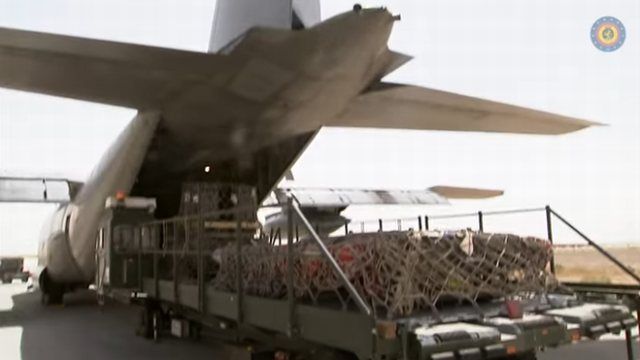
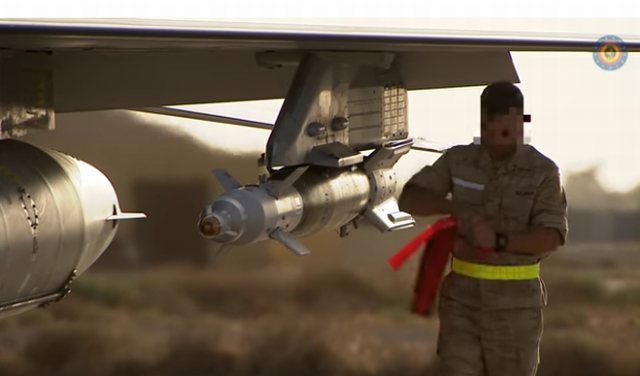
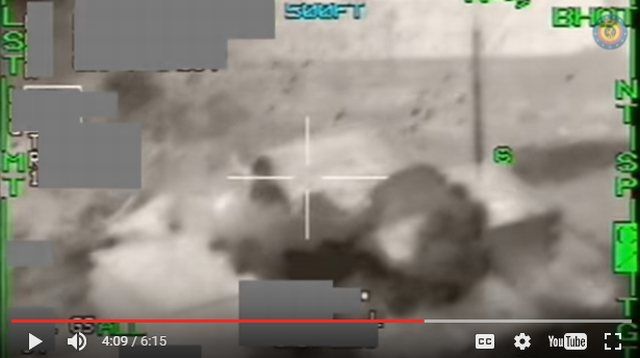
Some points yet.
a.) There was quite a row some two weeks ago when Russia accused Belgian jets of having killed 6 civilians in the village of Hasajek near Aleppo on 18 October, a claim Belgian Secdef Steven Vandeput immediately denied vehemently. It is always possible, of course, but I consider it highly unlikely since Vandeput and the top brass of the Air Force are boasting forever of their absolute commitment to avoid "collateral damage", the necessity of approval for each strike from a "Red Card Holder" etc. And to the best of my knowledge the Russians have still not backed up their claim with unequivocal proof. I actually find it quite rich from the Russians to come complaining about innocent civilian casualties when they themselves are known to bomb without much regard for civilian losses (I'm being polite here). They also deploy thermobaric weapons, like the ODAB-500 PM, see this video:
Not only do thermobaric weapons kill indiscriminately within a certain radius depending on the charge, but the ODAB-500 PM's the Russian Air Force uses in Syria are unguided! And only a couple of weeks ago the presence in Syria of the TOS-1A BM-1 Solntsepyok finally got the press coverage it deserves, since this multiple rocket launcher mounted on a T-72 chassis, nicknamed 'Blazing Sun' reportedly kills everyone inside a 200 by 400m rectangle. The 24 thermobaric missiles fired from 220mm tubes are also unguided - so Russia is really not the most credible party to deplore civilians killed or maimed in the Syrian conflict.
b.) At the beginning of the BAF's latest deployment, on July 1 of this year, news was that our jets would use GBU-39 Small Diameter Bombs (SDB's) to even further reduce the risk of killing innocent civilians. The SDB's in question would be units on loan from the Dutch, since The Netherlands seem to have had them in their inventory for a couple of years already. Belgium, which ordered its SDB's much later, will only receive their units towards the end of 2017, and word was that the first ones arriving would be handed over to the RNLAF to compensate for the ones we used over Iraq and Syria.
However, the last but one pic above clearly shows a GBU-12 Paveway II, a laser-guided bomb based on the "dumb" Mk82 500-pound bomb. So either we aren't using the Dutch ordnance for one reason or another, or we do, but not always, i.e. only when it absolutely has to be a pinpoint attack. This would make sense to me, since the unit cost of a GBU-39 is almost double that of a GBU-12 (40,000 US dollars to 21,896 US dollars).
c.) And then I have some trouble computing the video still of the large building in the last pic. I assume this must pass for a storage facility for IS vehicles or weaponry of some kind. An explosion like that is spectacular, of course. But would ISIS, two years into the war, still use large, blocky, easily recognizable structures like that for storing valuable stocks? If I were them, I would by now store my stuff in a dispersed manner, in smaller compounds which look innocent from the air. Is it not possible that targets which are so obvious are mere decoys, and that IS has spread the word they contain ammo or AFV's or whatever? I just hope the Coalition's intelligence has calculated this possibility in.
MFBB.